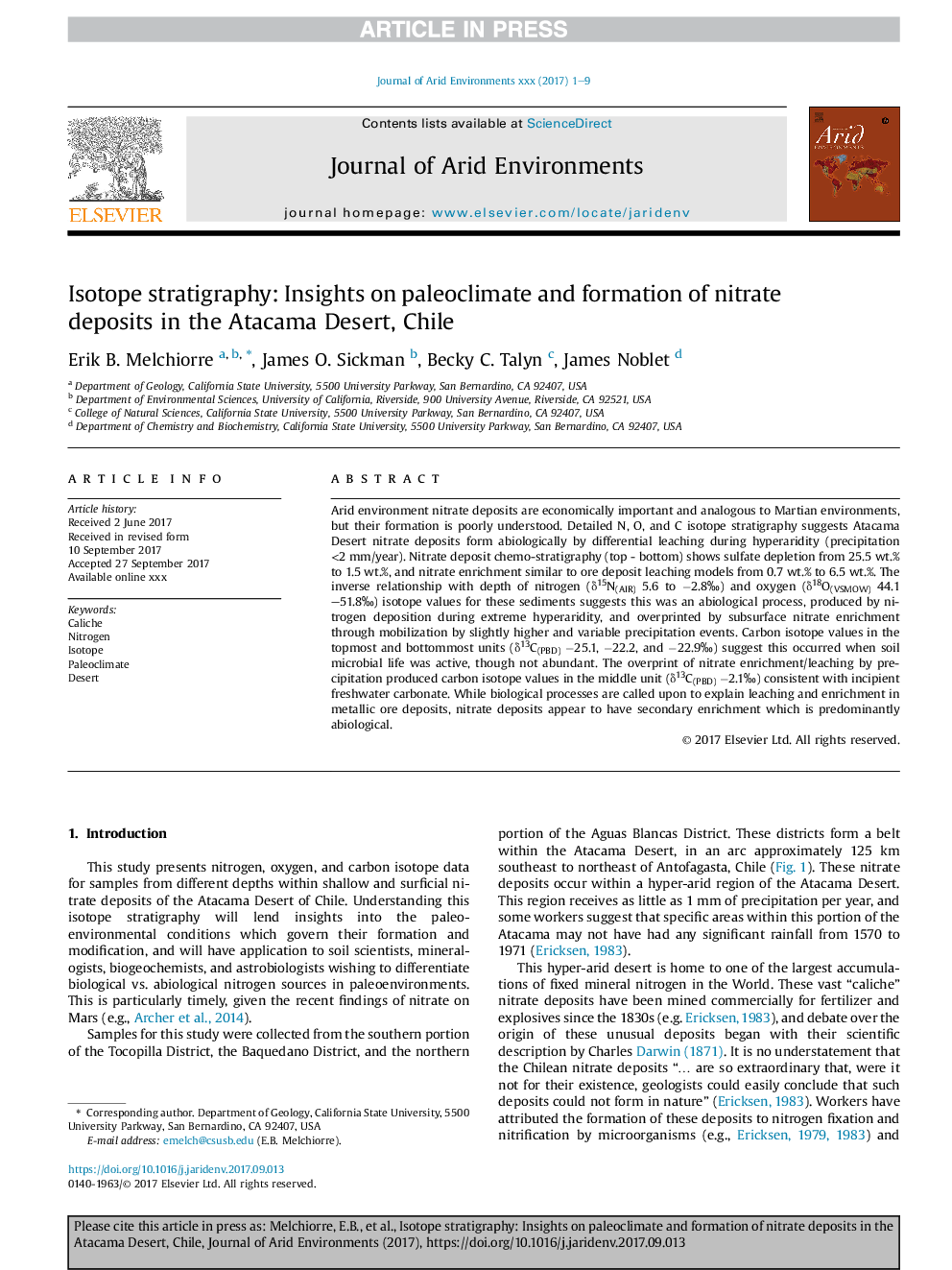| Article ID | Journal | Published Year | Pages | File Type |
|---|---|---|---|---|
| 8848612 | Journal of Arid Environments | 2018 | 9 Pages |
Abstract
Arid environment nitrate deposits are economically important and analogous to Martian environments, but their formation is poorly understood. Detailed N, O, and C isotope stratigraphy suggests Atacama Desert nitrate deposits form abiologically by differential leaching during hyperaridity (precipitation <2 mm/year). Nitrate deposit chemo-stratigraphy (top - bottom) shows sulfate depletion from 25.5 wt.% to 1.5 wt.%, and nitrate enrichment similar to ore deposit leaching models from 0.7 wt.% to 6.5 wt.%. The inverse relationship with depth of nitrogen (δ15N(AIR) 5.6 to â2.8â°) and oxygen (δ18O(VSMOW) 44.1-51.8â°) isotope values for these sediments suggests this was an abiological process, produced by nitrogen deposition during extreme hyperaridity, and overprinted by subsurface nitrate enrichment through mobilization by slightly higher and variable precipitation events. Carbon isotope values in the topmost and bottommost units (δ13C(PBD) â25.1, â22.2, and â22.9â°) suggest this occurred when soil microbial life was active, though not abundant. The overprint of nitrate enrichment/leaching by precipitation produced carbon isotope values in the middle unit (δ13C(PBD) â2.1â°) consistent with incipient freshwater carbonate. While biological processes are called upon to explain leaching and enrichment in metallic ore deposits, nitrate deposits appear to have secondary enrichment which is predominantly abiological.
Related Topics
Physical Sciences and Engineering
Earth and Planetary Sciences
Earth-Surface Processes
Authors
Erik B. Melchiorre, James O. Sickman, Becky C. Talyn, James Noblet,
